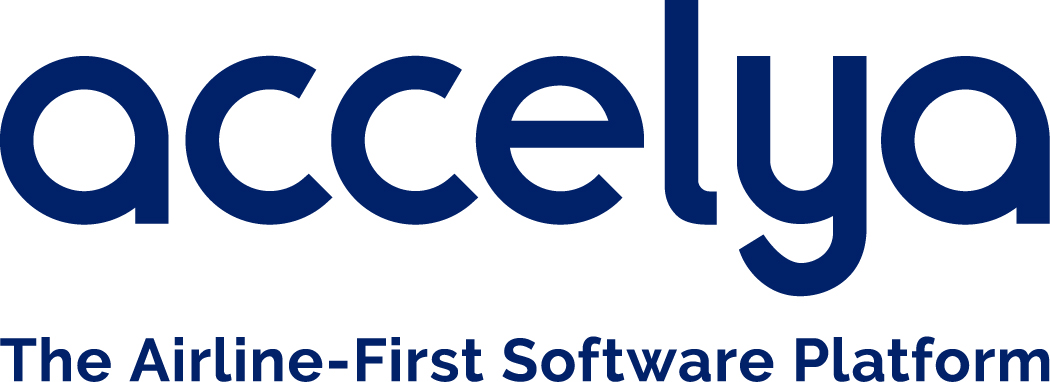
Together, Let's Build Modern Airline Retailing
We aim to support the whole value chain in planning their retailing journey, from defining strategy and objectives to initiating the program. The information and guidance provided will help facilitate the various discussions and identify the key steps required for a successful deployment program.
What’s in it for me?
Airline Retailing is a critical source of value creation for airlines. According to a McKinsey report, Airline Retailing has an industry value creation potential of up to $7 per passenger industry average or equivalent of approx. 4% revenue. Airline Retailing can produce value for airlines in 5 ways:
- Development of new offers
- Enhanced Revenue Management
- Optimized distribution mix
- Better targeting and engagement with customers
- Optimized payment and fulfilment
Did you know?
To accelerate the transition towards advanced retailing based on 100% Offers and Orders, an Airline Retailing Consortium was established in tandem with the launch of the Modern Airline Retailing initiative. As part of its activities, the Consortium engaged multiple stakeholders to develop a high-level Industry Transition Roadmap, incorporating industry feedback, projections and highlights deemed crucial elements for a successful transition, with timelines varying based on airline size, business models, and regional factors. It is based on current knowledge and will evolve over time as the 100% Offers and Orders journey progresses.
Follow these steps to start your journey towards Modern Airline Retailing:
- Understand the value of Airline Retailing
- Get the big picture with an industry vision for Offers and Orders and zoom into specific areas with with the Airline Retailing Consortium thought leadership
- Familiarise yourself with Airline Retailing concepts with Get started with Airline Retailing
- Learn about the Governance of the IATA standards — and how you can participate
- Hear directly from organizations driving the transition to Modern Airline Retailing by exploring our curated collection of Implementation Soundbites and Modern Airline Retailing webinars — available to watch on demand.
- Find Airline Retailing partners in the Airline Retailing Maturity index Registry
- Stay current with the Airline Retailing Newsletter - The Hub
 What’s in it for me?
What’s in it for me?
By leveraging a rich content view of travel options and greater transparency across carriers, travel sellers can personalize the end-to-end experience – shopping inspiration, booking, fulfilment, duty of care – along with the ability to efficiently manage air bookings across the entire workflow. As a result, travel sellers’ services will be more relevant, and their productivity will increase as they will not have to go through different systems or websites to buy ancillary products for their clients, for example.
A few perspectives from the implementers
Follow these steps to start your journey to Airline Retailing:
- Prepare for the future of travel management with the updated TMC Reference Architecture for Modern Airline Retailing. This comprehensive guide provides essential insights and frameworks to help Travel Management Companies (TMCs) consolidate a legacy-free environment of Offers and Orders, ensuring enhanced customer experiences and streamlined operations.
- Familiarise yourself with Distribution with Offers and Orders by reading NDC for Travel Sellers (pdf)
- Stay in touch with the Airline Retailing implementers community: AIR Tech Zone
- Find Airline Retailing partners in the Airline Retailing Maturity index Registry
- Stay current with the Airline Retailing Newsletter
More resources below for a greater focus on Business Travel
- Read the NDC for Travel Management Companies (TMCs) paper (pdf)
- Read the Change Readiness Guide for TMCs (pdf)
- Read Time to Fly (pdf) to understand the TMC value proposition in a new retailing landscape
Modern Airline Retailing: Travel Sellers FAQs
What is Modern Airline Retailing (MAR)?
Modern Airline Retailing (MAR) refers to the advanced approach to air travel distribution and servicing, focusing on transforming traditional methods into a more streamlined and customer-centric model.
The MAR initiative was officially established by IATA in December 2022, with the objective of supporting and accelerating the adoption of modern retailing practices by airlines and their value chain partners. The goal is to move towards a world of "Offers and Orders only", away from legacy processes, systems, and artifacts, thus enabling greater value creation opportunities for customers and value chain partners alike.
The Modern Airline Retailing initiative is built on three key pillars:
- Selling with Offers: providing travelers with more types of offers, more choice and greater transparency. This is supported by the NDC standard and includes advancements in personalization, dynamic pricing, third-party content bundling, and digital payments.
- Fulfilling with Orders: utilizing a suite of industry standards based on the ONE Order initiative. This enables the creation of a single order for travelers, replacing today’s multiple reference numbers and documents (such as PNRs, e-tickets, and EMDs). The result is a much smoother experience for shopping, servicing and especially during disruptions.
- Digital Identity: enabling a seamless and customer-centric travel experience. Digital identity, supported by biometrics, allows for the digitalization of admissibility processes before check-in and facilitates contactless interactions throughout the journey.
In a nutshell, MAR aims to solve the challenges posed by the legacy environment and is expected to lead to a more efficient travel management and experience, tailored to the individual needs of leisure and business travelers alike.
Where do NDC and ONE Order sit in relation to Modern Airline Retailing (MAR)?
The New Distribution Capability (NDC) and ONE Order standards preceded and paved the way for the MAR initiative. These standards, first available respectively in 2015 and 2018, were created to overcome the limitations of today’s traditional legacy technology and standards.
- NDC (New Distribution Capability): this standard revolutionizes how airlines create and distribute offers. By enabling more personalized and dynamic product offerings, NDC overcomes the limitations of traditional distribution systems. It allows airlines to present richer content and more tailored options to travelers, setting the stage for the broader modernization seen in MAR.
- ONE Order: building on NDC's capabilities, ONE Order simplifies the booking and fulfilment process by consolidating multiple records (like PNRs, e-tickets, and EMDs) into a single order. This streamlines the travel experience, making it more efficient and reducing complexity, especially during disruptions or itinerary changes.
In the context of MAR, NDC and ONE Order are foundational pillars that support the initiative's goals of creating a seamless, transparent, and personalized travel experience. They enable the industry to move towards a world of 100% Offers and Orders, which is believed to be the ultimate goal towards value creation and enhanced customer experience.
Why 100% Offers and Orders?
100% Offers and Orders is about simplifying and modernizing how air travel is sold and serviced—making it as seamless as customers expect. For travel sellers like TMCs, OTAs, and agents, this shift means moving away from fragmented legacy systems (PNRs, tickets, EMDs) to a unified model where all transactions are managed through Offers and Orders. This enables faster, more transparent shopping, easier servicing, and a consistent experience across channels.
Offers are dynamic, personalized bundles of flights and ancillaries; Orders consolidate everything into a single, streamlined record. This eliminates the need to juggle multiple systems or documents, especially during changes or disruptions. For sellers, it means greater efficiency, fewer manual workarounds, and the ability to deliver more relevant, value-added services to clients - all while staying aligned with how airlines are evolving their retailing strategies.
When will Offers and Orders be fully functional for airlines?
Airlines are modernizing fast - moving from legacy systems to dynamic, customer-centric retailing. While direct channels (like airline websites and apps) have seen major investment, the focus is now on transforming indirect channels through NDC APIs and the Offers and Orders model. This shift benefits the entire travel value chain, including TMCs and OTAs, by enabling consistent, streamlined servicing and richer content delivery across all touchpoints.
The transition to 100% Offers and Orders is a phased industry-wide journey. It hinges on four key areas: industry standards, airline readiness, airline IT capabilities, and the preparedness of partners like travel sellers. Some airlines are already leading the way by adopting Orders as the single source of truth, replacing PNRs and e-tickets. IATA continues to guide this evolution, ensuring all stakeholders are aligned and equipped to thrive in the new retailing landscape.
Find out more in the first Industry Transition Roadmap towards Offers and Orders.
What are the seller business capabilities needed to process orders?
To succeed in the Offers and Orders environment, travel sellers - especially TMCs - need a modern set of business capabilities that support end-to-end order management. This includes robust operations and servicing tools to handle disruptions and notifications, as well as offer management systems that aggregate and harmonize content from airlines, rail, and hotels. Order creation, storage, and payment processing must be seamless, supporting both traditional and modern payment methods through integrated gateways.
Equally important are analytics, channel management, and back-office automation. Sellers need tools to extract insights from offer and order data, interfaces for both agents and travelers (including chatbots and OBTs), and systems that automate invoicing, reporting, reconciliation, and financial accounting. Duty of Care capabilities must also be in place to track and manage traveler safety in real time. Together, these capabilities enable travel sellers to deliver a streamlined, scalable, and customer-centric experience in the new airline retailing landscape.
The document Modern Airline Retailing: TMC Business Capabilities needed in a context of Offers and Orders outlines essential capabilities for Travel Management Companies (TMCs) to process airline orders effectively.
There are capabilities in the GDS that do not work in NDC. Why is this so?
Not all GDS capabilities translate directly to NDC because NDC is built on a different, modern retailing framework. What a seller can do in an airline’s NDC channel depends on five key factors: the version of the NDC standard used, how the airline and partners have implemented it, how workflows and roles have adapted, the limitations of legacy systems, and commercial agreements. Each version of the NDC standard introduces new features and automation, but full functionality also depends on how well systems and processes across the value chain are aligned.
In short, gaps in capability are often not due to NDC itself, but to how it’s adopted and supported. Airlines may still rely on legacy infrastructure, or commercial strategies may limit content availability. Sellers, intermediaries, and tech providers must evolve together -- technically and operationally -- to unlock the full potential of NDC. Understanding these dimensions helps sellers identify the real root causes behind missing features and better engage with partners to resolve them.
Does servicing in NDC work?
Yes, NDC supports servicing, but its effectiveness depends on both the standard and how it’s implemented. The NDC schemas include core messages for servicing scenarios like changes, reissues, and notifications. Newer versions of the standard bring more robust capabilities and better customer experiences. However, these benefits are only realized when airlines and their partners adopt the latest versions and align their systems accordingly.
In practice, full servicing depends on the airline’s tech maturity and ecosystem readiness. Many airlines still operate with legacy systems (PNRs, tickets, EMDs), which must be synchronized with NDC’s Order structure until they fully adopt an Order Management System. Until then, servicing may be limited or inconsistent. True end-to-end servicing requires collaboration across the value chain -- sellers, aggregators, OBTs, and back-office providers all play a role in delivering a seamless experience.
Do we have to wait for Offers and Orders to experience strong servicing capabilities?
No. There are many real-world examples, such as United Airlines, who are already delivering enhanced servicing through NDC. In fact, they’ve shared a real-world example of how their NDC capabilities are improving the experience for both travel sellers and travelers. From handling waivers to managing changes more efficiently, United demonstrates what’s possible when modern servicing is fully implemented.
Watch the full video interview with United to explore how the carrier is making NDC servicing work in practice.
Additional resource: Servicing in NDC: where are you?
What is driving airlines to adopt Offers and Orders, and how does this shift impact their travel agent partners?
Airlines are driving this transformation because it will benefit their customers -- across all channels. This transition is designed to benefit not only travelers but also partners such as travel agents
Traditional systems, while foundational, were not built to support modern retailing needs and lack the flexibility to support evolving customer needs. By moving beyond these limitations, airlines gain greater control over their content and can deliver more dynamic, customer-centric offers with greater agility and transparency -- also via their travel agency partners.
This evolution opens new opportunities for collaboration across the value chain and can ultimately offer value creation opportunities for all players.
Importantly, NDC is not the final destination, but a stepping stone toward a broader digital retailing transformation based on 100% Offers and Orders. In this future state, all travel components are managed through a single, unified order, enabling seamless experiences and efficient servicing across all channels.
Why is it necessary to move away from legacy processes and technology in the travel industry?
Legacy systems -- such as traditional PNRs, E-Tickets, and GDS-based workflows -- were built for a different era of travel. While they’ve supported the industry for decades, they now present limitations in meeting today’s modern travelers' expectations for personalization, automation, and real-time servicing.
Staying tied to legacy infrastructure limits innovation, slows down response to market, and increases complexity for both airlines and their travel agent partners. By transitioning to a Offers and Orders framework, the industry can unlock greater efficiency, and deliver more flexible customer-centric experiences. It also lays the foundation for a more dynamic and connected travel ecosystem.
It is not just about keeping up; it is about shaping the future of travel and enabling all players to thrive in a more dynamic environment.
What are some real-world examples of travel agents successfully leveraging NDC?
You don’t need to look far -- just scroll up. The interviews featured in the upper section of this page showcase how some travel management companies are leveraging NDC to enhance their offerings, streamline workflows, and deliver more personalized service.
As the industry moves away from legacy artifacts and processes and toward Offers and Orders, how can we visualize what this shift might look like from a travel agent’s point of view?
PNRs were introduced in 1964, making them over 60 years old. While they’ve been foundational, the airline industry still relies on this legacy architecture, limiting the ability to deliver modern digital experiences. These systems were not designed for today’s expectations around personalization, automation, and seamless servicing, and they now pose significant constraints on innovation and customer experience.
So, what does this shift look like in practice?
Let’s compare the traditional set-up with the emerging Offers & Orders framework:
| Aspect | Legacy Process | Modernized Process |
| Content Access | Limited to GDS content (airfare, schedules, basic ancillaries) | Rich airline-direct content (personalization, bundles, ancillaries) |
| Booking Flow | PNR creation - Fare filing - Ticketing (separate steps) | Offer creation - Order confirmation (simplified) |
| Customization | Minimal personalization, static fares | Personalized offers based on traveler profile and context |
| Ancillaries | Often booked separately, or not visible | Fully integrated and visible at time of offer |
| Servicing | Complex rebooking, manual fare recalculations | Seamless changes, order-based servicing |
| Agent Tools | GDS interface with complex, fragmented systems and workarounds | Content and streamlined workflows based on modern technology |
| Customer View | Limited transparency, no dynamic offers | Transparent, retail-like experience with full offer visibility |
What is the role of NDC in the transition to Offers and Orders?
NDC is the first step for airlines to enhance the customer experience in the indirect channel.
- Traditional fare-centric content is replaced with dynamic, personalized offers.
- Travel agents gain access to real-time pricing, ancillaries, and bundled products directly from airlines.
- Customers benefit from greater transparency and control during their shopping journey.
As airlines begin implementing ONE Order, booking and servicing processes become even more streamlined. By replacing multiple passenger records (PNRs, tickets, EMDs) with a single order, servicing actions like changes and refunds become simpler and more seamless. This leads to fewer errors, more personalized service opportunities, and enables travel agents to deliver better customer experiences while operating more efficiently.
What are the implications of these (NDC and ONE Order) standards for travel agents?
Adopting modern standards like NDC and ONE Order can be a game-changer for travel agents -- both now and in the future. These innovations open the door to new opportunities across multiple dimensions of the business.
Here’s how travel agents can benefit:
- Stay competitive: Gain access to exclusive, dynamic content and personalized offers that keep you ahead of online platforms and direct airline channels.
- Unlock full airline content: Ensure access to the latest fares, ancillaries, and bundles available only through NDC-enabled channels.
- Boost operational efficiency: Streamline workflows and reduce manual tasks with ONE Order, saving time and minimizing errors.
- Strengthen airline partnerships: Build closer relationships with airlines through direct connections, unlocking better commercial terms and incentives.
- Grow revenue streams: Increase sales through personalized upselling and bundling and tap into new ancillary revenue opportunities.
- Deliver superior customer service: Offer faster, more relevant, and flexible service that enhances customer satisfaction and loyalty.
How do modern airline retailing platforms integrate with travel agency systems?
Modern airline retailing platforms integrate with travel agency systems primarily through API-based connectivity, enabling seamless, real-time communication and content delivery.
Here's how the integration typically works:
- Airlines expose their content (fares, ancillaries, bundles) via their NDC API, using the IATA Standard.
- Travel agencies connect to these APIs directly or through aggregators, enabling access to personalized offers.
- NDC aggregators are used by many agencies to simplify integration and obtain airline content. This help to reduce the need for one-to-one airline API connections.
Therefore, moving toward Offers and Orders agents may need to adopt NDC-capable systems that can connect to airline APIs or aggregators.
To fully benefit from ONE Order, agents will need to adopt new order-based workflows into their system, environment (OTA or Business) and/or mid back-office tools. Agents may need to invest in cloud-based infrastructure and API management tools to support real-time data exchange, scalability, and system reliability. IT investments may need to be paired with staff training and workflow redesign to ensure agents can effectively use new tools and interfaces. Each travel agent identifies the IT investment that best supports their value goals.
Note: IATA has equipped the industry with the Airline Retailing Maturity (ARM) index, which provides airlines and their partners with improved visibility of their own and other organizations’ retailing maturity.
Where can sellers find information about system providers with recognized Offers and Orders capabilities, supporting the Modern Airline Retailing (MAR) transformation?
Sellers can find this information in the IATA Airline Retailing Maturity (ARM) index registry. The registry lists MAR ecosystem players (system providers, sellers, and airlines) whose MAR and Offers and Orders capabilities have been reviewed and validated by IATA.
Learn more about the ARM index and unlock the benefits of being assessed and listed.
How will disruption management work with ONE Order?
Traditionally, disruption handling involves managing multiple records, PNRs, e-tickets, and EMDs, which slows down updates and complicates service recovery. With ONE Order, all journey details are stored in a single, unified record. Everyone (airlines, agents, and travelers) sees the same real-time information. When a change is made, it updates instantly across all systems.
Retailing is about bringing the customer (the corporate buyer) and end consumers to the centre of the ecosystem. Airline retailing is also about personalisation of content and letting travellers enjoy their choice of services throughout their journey at every single touchpoint.
Hear Deloitte Germany's Senior Travel Technology Manager's perspective on how the transition to NDC and modern retailing impacts travel management programs, as well as his word of advice to other corporate buyers:
Rethink your travel program in the context of NDC and Modern Airline Retailing
As a first step, we invite you to watch the episodes of our Corporate Travel webinar series, developed with members of the IATA Travel Manager Advisory Group (TMAG).
The series will help you assess the impact of the modern retailing transition on business travel management, as well as provide viable insights into what to expect when aligning your corporate travel program with NDC and the ongoing airline retailing transformation.
Useful guidance and resources
To further understand the value proposition of modern airline retailing for your corporate travel program and to start your journey:
- Read the NDC for Corporates paper (pdf)
- Learn the impact of NDC on corporate travel program Step on the Gas (pdf)
- Read the Mini Guide Being NDC Ready for Travel Manager (pdf)
- Explore the Corporate Buyers' vision of Business Travel in NDC
- Read the Distribution & Services RFP framework (pdf)
- Stay current with Airline Retailing Newsletter
- Circle back to the 'origins' with Taking the Reins - the Travel Buyers' vision of Business Travel in NDC (TMAG, 2017)
The transition to Modern Airline Retailing with 100% Offers and Orders is not just an airline initiative. IT providers are not only enablers of this major transformation; they are co-architects of the future airline retailing landscape. By aligning with IATA’s Industry Transition Roadmap and modern retailing standards, they are helping airlines move beyond legacy systems toward a simplified, modular, and customer-centric model.
The value at stake from leading the change
The modern retailing transformation opens new strategic and commercial opportunities for the technology partners who are ready to lead. By delivering modular, interoperable solutions – such as Offer and Order Management, Delivery, and Accounting – they are building the systems that will replace traditional, monolithic Passenger Service Systems (PSS), and support a new generation of airline retailing.
Technology partners interact closely with IATA and its airline members through the Offers and Orders Transformation Strategic Partnership Program (OOT SP), working sessions and industry meetings, such as the Offers & Orders Forum and Demo Days. These touchpoints – alongside the industry Reference Business Architecture (PSC RP 1786a) – provide strategic guidance and platform for collaboration, feedback, and alignment with evolving airline needs and industry direction.
Tracking Progress: IT Provider Readiness & Roadmap to 100% Offers & Orders
The overall IT provider readiness and roadmap to 100% Offers & Orders for the near future is a critical enabler of the industry's progress towards Modern Airline Retailing.
Introduced in 2023, the IT Provider Readiness Survey offers the first comprehensive view of how technology partners are progressing towards modular, legacy-free Offer and Order systems. This annual benchmark captures where providers stand and how closely their solutions align with airline expectations. It reflects growing momentum across the ecosystem and areas where acceleration is still needed to meet the industry's ambitious transition roadmap.
Whether you're actively engaged or just entering the transformation space, the survey provides essential insights to help you assess your position, identify opportunities, and stay aligned with the direction of airline retailing modernization.
IT Provider Readiness and Roadmap to 100% Offers & Orders
Explore the 2025 edition of the Modern Airline Retailing Readiness and Roadmap to 100% Offers & Orders, featuring consolidated insights from IT providers and Consortium airlines.
Modularity in Action: Multivendor Demo Day 2025
The IATA Airline Retailing Consortium launched a challenge for IT providers to demonstrate modularity in action. The task: produce live demos showing how two or more IT Provider systems interact across five business domains – Product, Offer, Order, Finance, and Delivery – based on the Reference Business Architecture (PSC's RP 1786a). The goal was to move beyond modularity and demonstrate real collaboration between providers, working as teams to build modular, legacy-free Offer and Order systems that could replace monolithic PSS solutions.
Over 20 IT Providers formed 8 teams and worked for 9 months to build live, interoperable demos based on RP 1786a. These demos were showcased at the first Offers & Orders Demo Day (1-2 October 2025) in Geneva. They proved that modularity is real and that Offer and Order systems without PSS or legacy dependencies are being developed. The Airline Retailing Consortium congratulated all teams for their implementation efforts and collaboration.
IT Provider Modularity Demo Day 2025 Material
Explore the spirit of the challenge and gain a brief overview of the participating teams and their modularity demos by viewing the IT Provider Modularity Demo Day 2025 presentation – a snapshot of collaborative innovation and the future of Offer and Order systems.
Next Multivendor Offers & Orders Demo Day
The next multivendor Offers & Orders Demo Day will take place on 18 June 2026, alongside the Offers and Orders Forum (16–17 June). Airlines can attend, and IT Providers can participate by enrolling in the IATA SP Offers and Orders Transformation Strategic Partnerships (OOT SP) area of involvement.


















